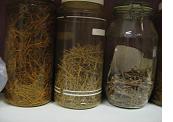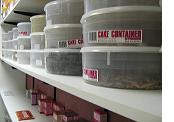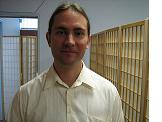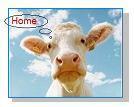|
Traditional Chinese Medicine (TCM) Q & A Part 1
What is a TCM consultation like?
Traditionally, Acupuncture is just one of the "Eight Limbs of Medicine". A practitioner may also employ Herbal Medicine, Cupping Therapy, Moxibustion (a form of herbal heat therapy), "Gua sha" (also called scraping or spooning), Massage, Dietary Therapy, Exercise Therapy (e.g.Tai Chi, Qi Gong etc.) to help balance the individuals’ constitution.
When consulting an Acupuncturist, the practitioner will typically use many different diagnostic tools such as: feeling the radial pulse, looking at the tongue, asking specific questions about the body which can sometimes seem unrelated, but which can give an insight into the person’s unique constitutional picture.Palpation is often performed on various acupuncture points, around the abdomen, or back, and the local problem area in many cases. The practitioner may also inspect the eyes, the hands, the ears, even the different sounds and smells of a person can be used diagnostically. In short a wide variety of techniques are used to give a wholistic picture to the practitioner. Most practitioners use single and disposable Acupuncture needles that can vary in size depending on the practitioner or the problem. But generally about five acupuncture needles can fit into the head of a hypodermic (injection) needle. A hypodermic needle being a hollow tube minutely gouges out skin then injects or withdraws fluids. Where-as the Acupuncture needle is quite fine and is often not felt going in unless on the pore of the skin or areas of extreme tension. Needle manipulation techniques, if required, may produce a sensation like a dull ache, tingling, numbness, soreness or sensation of movement which is regarded as therapeutic and can change with the progression of the therapy. Needles are left on average 20-30 minutes, but can vary according to the condition.  Acupuncture needles are used on specific points to re-correct an imbalance which registers in the "channels and collaterals" (Jing-luo) i.e. the meridians of the body. Like rivers that nurture the landscape, the ancient eastern cultures observed that the body has specific pathways of vital energy flow that maintain equilibrium of health and reflect a disturbance to that health. These pathways are seen to have an affinity with particular internal organs, and can register an imbalance in the functional pattern associated with the organ/meridian network. By regulating the flow of Qi (pronounced "chee") via the meridian network, an Acupuncturist may re-correct a disharmony in the body-mind. The specific nature of many health factors can also be viewed in terms of the harmony of "Yin" and "Yang" and the "Five Elements". For example, Blood is seen as "Yin" and more substantial, where as "Qi" is seen as more "Yang" and functional. Like Heat and cold, rest and activity, a balance between the two is needed for optimal health.
Acupuncture needles are used on specific points to re-correct an imbalance which registers in the "channels and collaterals" (Jing-luo) i.e. the meridians of the body. Like rivers that nurture the landscape, the ancient eastern cultures observed that the body has specific pathways of vital energy flow that maintain equilibrium of health and reflect a disturbance to that health. These pathways are seen to have an affinity with particular internal organs, and can register an imbalance in the functional pattern associated with the organ/meridian network. By regulating the flow of Qi (pronounced "chee") via the meridian network, an Acupuncturist may re-correct a disharmony in the body-mind. The specific nature of many health factors can also be viewed in terms of the harmony of "Yin" and "Yang" and the "Five Elements". For example, Blood is seen as "Yin" and more substantial, where as "Qi" is seen as more "Yang" and functional. Like Heat and cold, rest and activity, a balance between the two is needed for optimal health.
TCM Q & A Part [1.][2.][3.][4.] Additional video'sTraditional Chinese Medicine Part [2.][3.][4.]Professional profile of Mark Gearing Ba Hlth Sci Ac Mark was first exposed to TCM at an early age when he visited China with his mother who studied Chinese medicine in Hangzhou. He completed an Advanced Diploma in Acupuncture and Chinese medicine and began practicing whilst upgrading his studies to a Bachelor Degree level. Finishing an internship in a TCM hospital in Nanning China, he then continued with further post-graduate studies and clinical practice at Guangxi Traditional Chinese Medicine University before returning home. Mark currently practices on the Gold Coast.
Mark was first exposed to TCM at an early age when he visited China with his mother who studied Chinese medicine in Hangzhou. He completed an Advanced Diploma in Acupuncture and Chinese medicine and began practicing whilst upgrading his studies to a Bachelor Degree level. Finishing an internship in a TCM hospital in Nanning China, he then continued with further post-graduate studies and clinical practice at Guangxi Traditional Chinese Medicine University before returning home. Mark currently practices on the Gold Coast.
Back Through The Lens Contact and or feedback 

|




